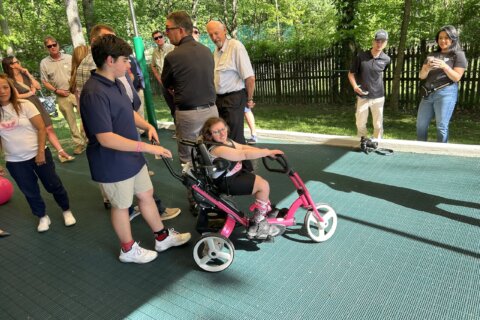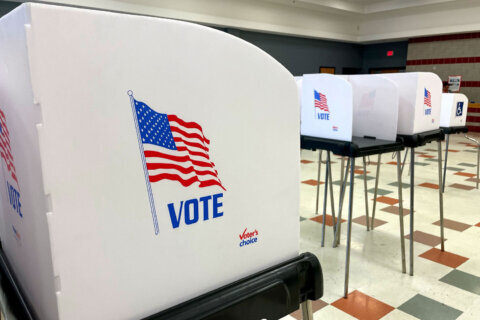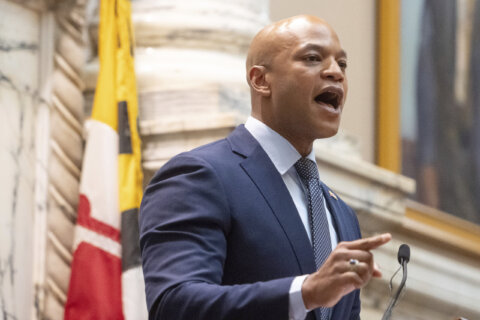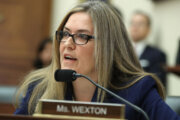Maryland’s health secretary said a recent federal announcement expanding eligibility for coronavirus vaccines is making vaccination in the state more difficult.
Speaking Monday to the newly formed Maryland Senate Vaccine Oversight Workgroup, acting Health Secretary Dennis R. Schrader said the state had progressed to vaccinating group 1B last week and was doing well keeping up with the demand. But then they hit a snag.
“Both the incoming and outgoing administration … said that they wanted to move ahead with 65-plus, which pushed us into 1C,” Schrader said. “Which is fine, but it does put more pressure on the number of eligible folks.”
The jump to Phase 1C was substantial.
“As of last week, when we went to 1B, we were at 1.2 million [people] eligible,” Schrader said. “As of this week with 1C, which brings in 65 and older, plus some essential folks, it takes us up to 2 million.”
Maryland was already behind in administering its vaccines, ranking 40th out of 50 states and the District based on population.
Schrader said that earlier, in the first four weeks of vaccinations, the state was being conservative to ensure that demand didn’t outstrip the supply of vaccines, which was approximately 70,000 doses a week. But with newly eligible people added into the mix, he said it is going take a number of weeks to catch up.
One thing this delay may impact is vaccinating teachers more quickly. With Maryland Gov. Larry Hogan’s recent push for schools to go to hybrid learning by March, many teachers were hoping to get vaccinated before going back to the classroom. Teachers are in group 1B and were at the top of the list, but now they are vying for a limited number of vaccines with the newly added 1C group.
“My preference, and I think everybody’s preferences, would have been to keep it to 1B for a while,” Schrader said. “The federal government forced our hand last week. … They insisted that 65 and older be put into the mix. That was a public announcement by both administrations and that was really unfortunate.”
Meanwhile, Schrader said that as officials work through the current backlog, they are also planning for the future by trying to expand the facilities ready to administer shots when more vaccine doses become available, hopefully by spring and summer.
“If another couple of vaccines come on market, if the administration is able to get more production out of the two manufacturers we currently have, that will bring us more doses,” he said.
State officials are also working to partner with pharmacies and large chains like Walmart and Giant.
“We want to have those channels open, which includes pharmacies and other provider channels, because we won’t be able to do all of this through the local health departments,” Schrader said.
“So we’re getting the pharmacies in the field now and testing it,” he added. “We don’t want to find out they can’t do it or are too slow later. We want to get them in the game now.”
Maryland is also looking at community-based sites, such as Kaiser Permanente, that can reach the lesser-vaccinated minority communities.
“Kaiser has 490,000 Marylanders in their program and they have a 36% African American membership and 12% Latino, so we want them and we’re working with them now,” Schrader said. “We’ve already given them doses.”
According to Schrader, those Kaiser facilities are concentrated in Prince George’s County, Montgomery County and parts of central Maryland.
But with more facilities coming online, that means fewer doses for each location, as the state’s allocation of total doses has not changed. So the state is keeping tabs on how well locations are doing with delivering doses and adjusting accordingly.
“The hospitals and the local health departments and the providers that are doing well, we make sure that they’re getting their share,” he said. “If a provider isn’t doing as well, they may get less. But we’re also very sensitive to making sure there is a pro rata share for every county.”
Schrader said that’s another reason Maryland needs more than one or two channels for vaccination delivery in each county.
“We need to have the pharmacies, etc., among other providers, so that we’ve got options in case one group isn’t working as well as another.”








